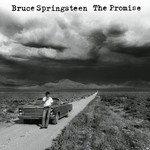The Promise
Studio Album by Bruce Springsteen released in 2010The Promise review
Springsteen recollects a difficult, yet important period in his career
In the late autumn of 2010 Bruce Springsteen released a record called The Promise. This double-CD collection contains the American singer’s rarest numbers he penned in the late seventies while working on Darkness On The Edge Of Town (1979). You will not find any of them on this wonderful album, but they are absent there not because they’re good enough, but because they did not comply with the album’s concept. A brief journey through history. After the release of the groundbreaking Born To Run in 1975, the artist, all of a sudden, disappeared for four years, which in those times was close to an artist's creative death. Today musicians afford releasing an album per three years, but back then it was a different story. Still, this is how long Bruce needed to settle legal issues connected with the Born To Run release, and set for radical reforms in his music domain. His next studio work surfaced only in 1979, and it was that very Darkness On The Edge Of Town that marked Springsteen’s turn towards a new style.
Songs, which had bad luck
Thirty years later, Bruce Springsteen arranged restoration of those days as he shot a documentary about making Darkness On The Edge Of Town and a long and tiring process of writing new material, the largest part never officially released. This song stock got its share of justice now that the artist has released a double CD with the most remarkable tracks which were put aside for such a long time. The Promise can I no way be seen as a collection of flops, failed experiments or simply silly and grey songs. And the reason is that only few songs out of those written by the maestro 1975 through 1979 were picked up for this compilation. These CDs store twenty one tracks altogether, while it might have easily been fifty and even seventy! A great share of these numbers either resembles the music offered by Bruce before the mid seventies, or mirrors the singer’s painful creative quest. These pieces were no longer essential for him. They had too much nonchalance and lightness of pop-music, too much dancing drive, while Bruce had already decided that he would have to release an uneasy album about hardships of city outskirts, working class and lonely hearts.
Have to listen to The Promise because these are Springsteen’s songs
There are different types of songs that you can find on The Promise with some of them (specifically, Come On (Let’s Go Tonight)) seeming to be a couple of steps from Darkness On The Edge Of Town. Some other, if being promoted promptly, could have made it to leading radio stations airplay. A few were lucky to be picked up by other performers. Patty Smith remade skillfully Because The Night, and The Pointer Sisters employed Fire. Save My Love, and Gotta Get That Feeling are examples of those tracks that were denied by the author because they were too sentimental for the new Springsteen. Whether he felt sorry for his own creatures, or he did not want them to be left without the audience’s attention, the reason is known to Bruce alone. Whatever the case, The Promise is ready and waiting for listeners. This is not a new studio album. Nor is it a best-of collection. This is not even a new edition of one of the American singer’s best past releases. The Promise is a project whose success may seem possible only to a maker who is a star as bright as Bruce Springsteen. You should give The Promise a listen, well, because these are Bruce Springsteen’s songs.

